Pregnancy and parenthood are overwhelming even in the most ideal circumstances. For some, the time before a baby arrives is spent choosing the right stroller or figuring out how to install a car seat. But for parents without stable housing or income, the stakes are higher. Every decision feels critical: rent or diapers, formula or gas, all while trying to get enough nourishing food to support a healthy pregnancy.
For 36 years, Homeless Prenatal Program (HPP) has helped lighten the load for expecting parents by providing the tools and support they need to build healthy, stable families. Located in San Francisco’s Mission District, HPP connects pregnant people and their partners with parenting classes, case management, housing support, and fresh groceries through a long-standing partnership with the San Francisco-Marin Food Bank.
For many staff members, the work is deeply personal.

“My journey started here,” declares Mike Brown, a Community Staff Member at HPP. “I used these services before, and now I’m able to give back. I owe it.”
Mike oversees the same pantry line he once stood in as a kid. His connection to the Food Bank goes back decades, to when his mom turned to HPP for support while raising him on her own and trying to get by during unemployment.
“My mom had me young,” he says. “So we basically grew up together.” He remembers the palpable relief of leaving the pantry with food. It’s why he admires his mother for the strength it took to ask for help, and why he understands how much that support means to families.
“Whether it’s a bag of rice or the eggs this week, it’s all very necessary,” Mike says. “It may be just some carrots and some radishes, but that goes a long way when you have nothing.”
As Mike shares his story, Rashawna nods in agreement. She found HPP in 2009, when she was pregnant and full of questions. “Back then, there were not many mom classes available,” she recalls. “[HPP] had the support I needed.”
Through breastfeeding education and peer support, she was able to prepare for her growing family. And with crucial access to fresh produce and pantry staples from the Food Bank, she built a stable foundation for her and her child.
“It was feeding me, it was feeding my children. It was putting food in the household,” Rashawna says. “When you don’t have that money to make ends meet, then you have the food [from the Food Bank] to rely on. Even if you’re vegetarian, you can make a really good meal.”
The support she received was transformative, and Rashawna is now an intern in HPP’s paid community health worker apprenticeship. “I was a client,” Rashawna says, “and now being able to give back is a wonderful opportunity.”
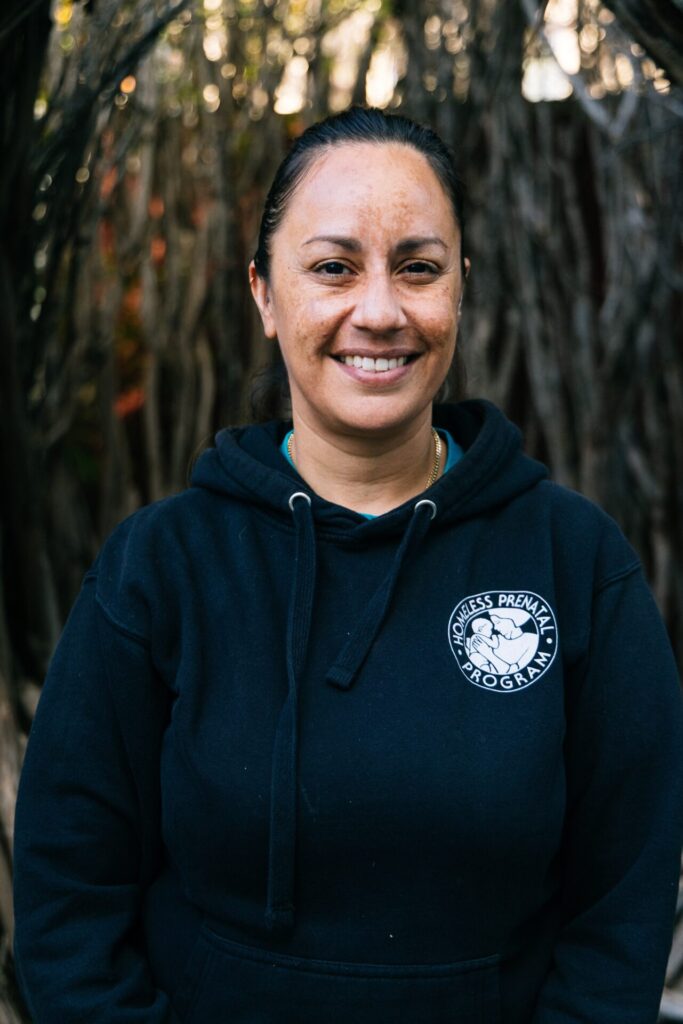
Linda has spent 12 years on HPP’s operations team, helping run the Food Bank’s weekly food distributions. She says stories like Mike’s and Rashawna’s show just how powerful the partnership between HPP and the Food Bank really is. “What’s special about Homeless Prenatal is serving the community and seeing all these beautiful little children thrive,” she says. “It takes a village to raise a child, but it takes a village to raise a community. This is it. This is the village.”
But with shrinking budgets and looming cuts on all levels of government, she’s worried about how much support HPP will be able to provide. And Food Bank contributions are more essential than ever.
“Right now, San Francisco-Marin Food Bank is our only source of fresh fruits and vegetables,” Linda says. “Due to the budget cuts, we no longer have different resources… we rely on the Food Bank.”
She remembers when HPP could assemble Mom Boxes filled with peanut butter, rice, beans, apples, and chicken. They’d then supplement them with Food Bank extras to round out the meal. But those boxes are no longer possible. “Now we’re just giving Food Bank food,” Linda says. “People are thankful, but it’s hard to see a mom walk away without a bag, especially when she’s picking up right before school drop-off.”
That strain isn’t unique to HPP. Across the Food Bank’s network, staff and volunteers are bracing for what comes next. Lucia Ruiz, a Senior Program Manager at the San Francisco-Marin Food Bank, hears that uncertainty every day.
“We don’t know yet exactly how federal budget cuts are going to affect us, but we do expect there could be fewer of certain items coming in,” she says. “What we do know is that we’re incredibly grateful for the support of donors and community members — it’s what allows us to keep these programs going.”
Lucia says it’s that sense of community and commitment to showing up for each other that will carry partners like HPP through these uncertain times
“This pantry is more than a food distribution site,” she says. It’s a trusted hub where families get groceries, diapers, and other essentials,” she says. “Even during the pandemic, they kept their doors open. That tells you what kind of community this is.”


 Jean Baker has a joyful smile and ebullient spirit, and both seem to shine prominently on the cover page of the Food Bank’s 2023-24 Annual Report. Now retired, and focused on family and her faith, for years Jean served as a steadfast connection between the Food Bank and participants who came to a food pantry at her church in the Mission District in San Francisco.
Jean Baker has a joyful smile and ebullient spirit, and both seem to shine prominently on the cover page of the Food Bank’s 2023-24 Annual Report. Now retired, and focused on family and her faith, for years Jean served as a steadfast connection between the Food Bank and participants who came to a food pantry at her church in the Mission District in San Francisco.
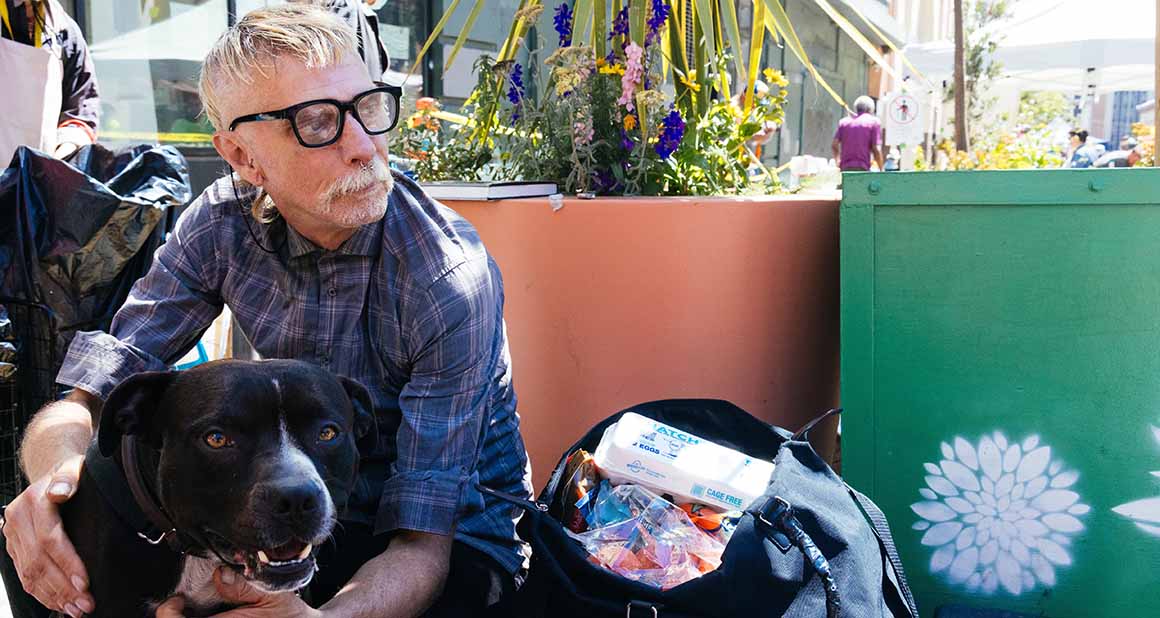
 During this period, he rescued le Roi — emaciated and severely abused — from the streets. Nursing le Roi back to health became his mission. “I put him on a high protein, high caloric, high fat diet,” Todd said. With the money the pantry saved him on groceries, he was able to buy quality dog food. Fully recovered, le Roi now “picks up his own leash and walks himself. He plays basketball and body surfs,” Todd beamed.
During this period, he rescued le Roi — emaciated and severely abused — from the streets. Nursing le Roi back to health became his mission. “I put him on a high protein, high caloric, high fat diet,” Todd said. With the money the pantry saved him on groceries, he was able to buy quality dog food. Fully recovered, le Roi now “picks up his own leash and walks himself. He plays basketball and body surfs,” Todd beamed.
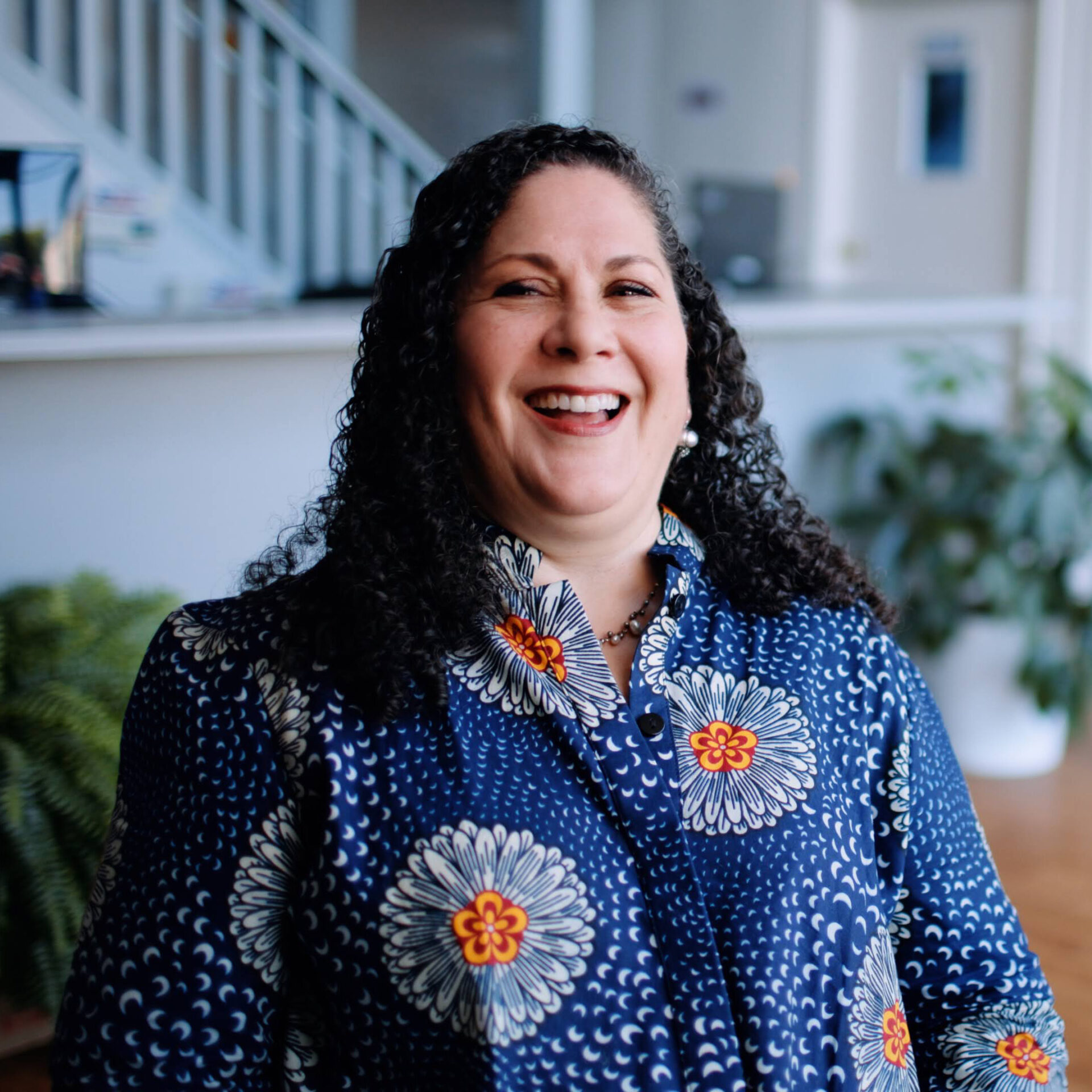
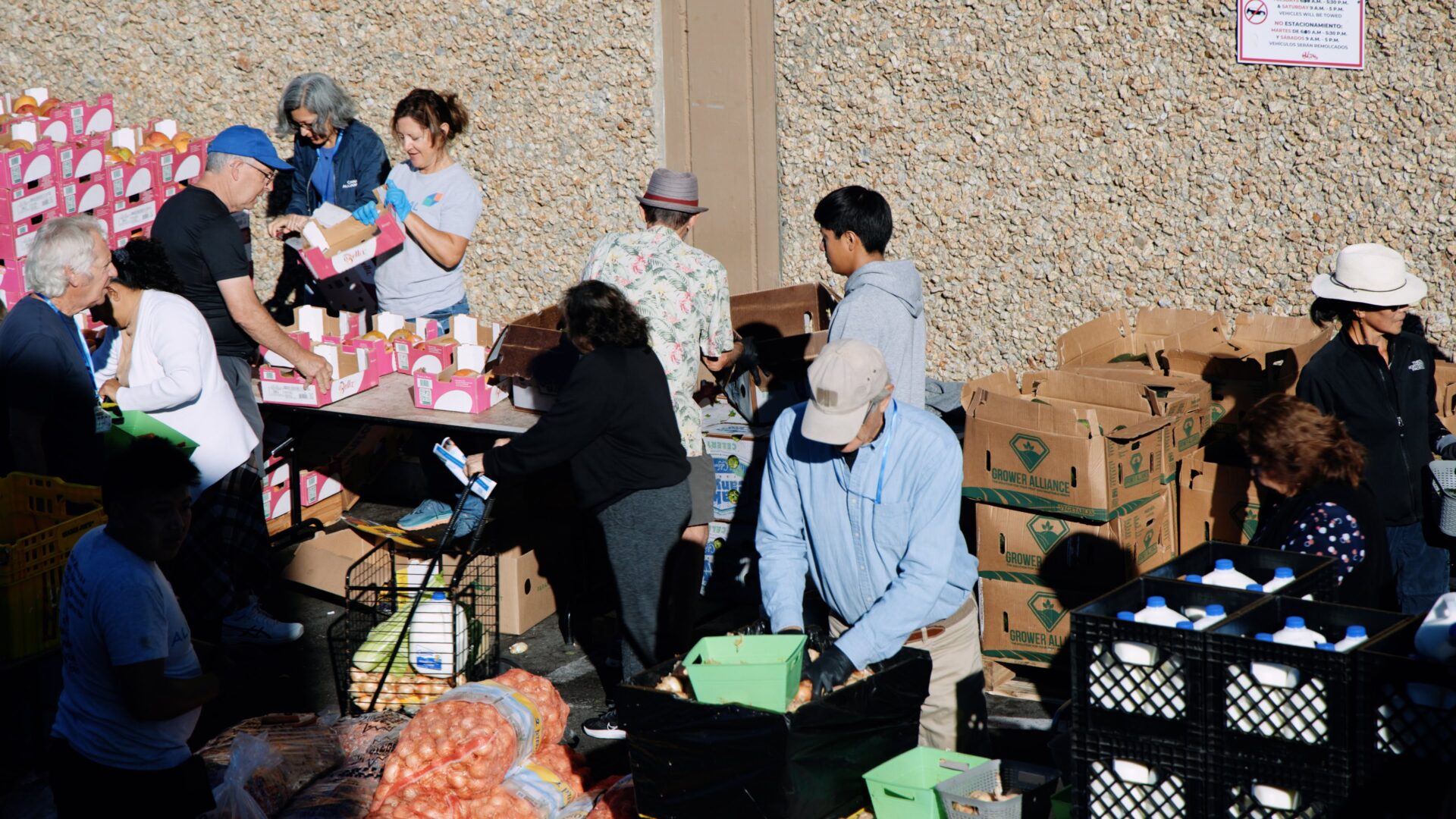

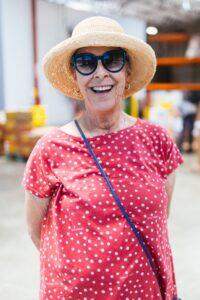 Carolyn Golden’s relationship with the Food Bank goes way back – back to the beginning, in fact. Prior to the merge of the Marin Food Bank and the San Francisco Food Bank in 2011, Carolyn saw an advertisement in the newspaper for a Marin Food Bank food drive.
Carolyn Golden’s relationship with the Food Bank goes way back – back to the beginning, in fact. Prior to the merge of the Marin Food Bank and the San Francisco Food Bank in 2011, Carolyn saw an advertisement in the newspaper for a Marin Food Bank food drive. network of 350 partner organizations across San Francisco and Marin, the quality and scale of Food Bank operations has grown drastically. Through it all, Carolyn’s partnership has grown alongside it.
network of 350 partner organizations across San Francisco and Marin, the quality and scale of Food Bank operations has grown drastically. Through it all, Carolyn’s partnership has grown alongside it. 
 about his health and also wanted to make sure that he didn’t lose access to the pantry’s services if he was still in need of the food. That’s when I remembered that included in the handwritten card that his granddaughter had given me, was her mom’s contact info.
about his health and also wanted to make sure that he didn’t lose access to the pantry’s services if he was still in need of the food. That’s when I remembered that included in the handwritten card that his granddaughter had given me, was her mom’s contact info. 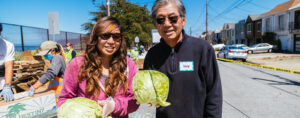
 below. Next door, another restaurant dishes up steaming, juicy xiao long bao.
below. Next door, another restaurant dishes up steaming, juicy xiao long bao.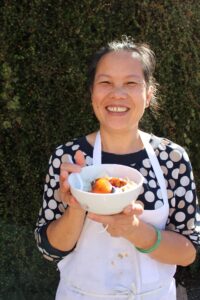 down restaurants all over the Bay Area and put her and thousands of others out of work. As a single parent raising a high schooler, putting another daughter through college, and helping support her eldest daughter at the time, Ming needed some support of her own. Ever since, these weekly groceries from the pantry near her work have remained a crucial time- and money-saver for this busy mom.
down restaurants all over the Bay Area and put her and thousands of others out of work. As a single parent raising a high schooler, putting another daughter through college, and helping support her eldest daughter at the time, Ming needed some support of her own. Ever since, these weekly groceries from the pantry near her work have remained a crucial time- and money-saver for this busy mom. 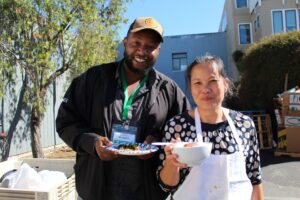 volunteers make their way over, dishing up portions buffet-style and gathering around the foldout table. Turns out, it’s not only Ming’s family that she’s bringing together over food.
volunteers make their way over, dishing up portions buffet-style and gathering around the foldout table. Turns out, it’s not only Ming’s family that she’s bringing together over food.
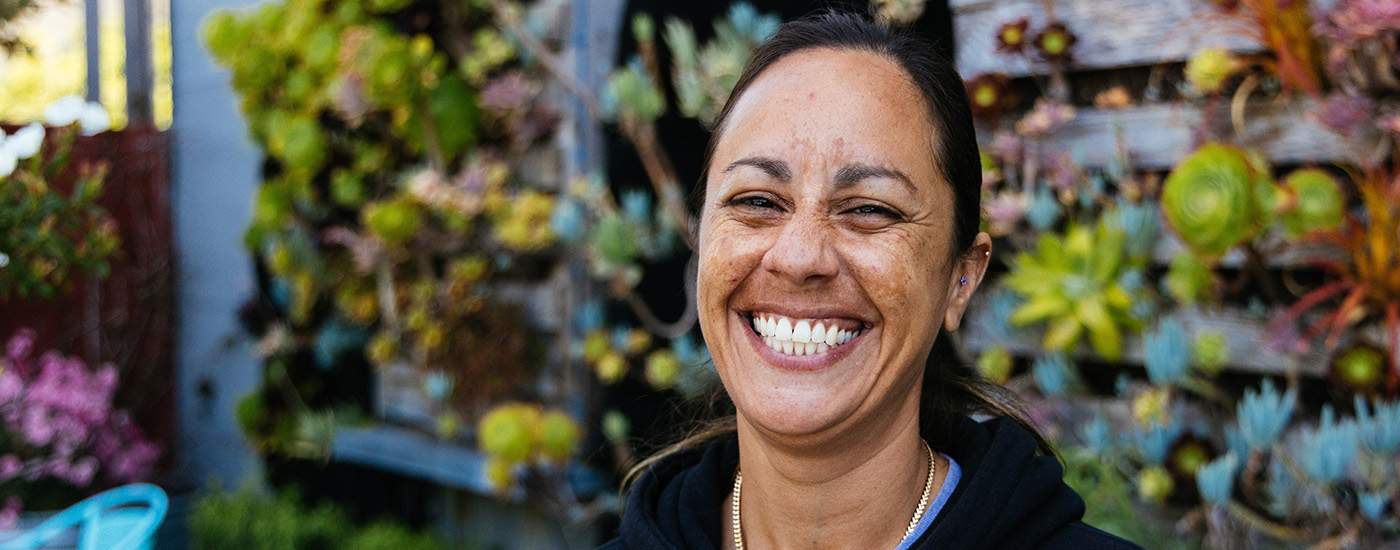

 40 years, an activist, and a pantry participant since 2020 in his neighborhood of the Western Addition. He’s also one of roughly 101,000 CalFresh (known as SNAP federally) recipients in San Francisco who saw their grocery budget decimated overnight. This is due to the federal government’s decision to cut emergency allotments, which boosted CalFresh benefits by an average of $160 for recipients in San Francisco during the pandemic. That’s a loss of nearly $12 million a month in food assistance for our neighbors.
40 years, an activist, and a pantry participant since 2020 in his neighborhood of the Western Addition. He’s also one of roughly 101,000 CalFresh (known as SNAP federally) recipients in San Francisco who saw their grocery budget decimated overnight. This is due to the federal government’s decision to cut emergency allotments, which boosted CalFresh benefits by an average of $160 for recipients in San Francisco during the pandemic. That’s a loss of nearly $12 million a month in food assistance for our neighbors. For Miguel, his CalFresh benefits were a supplemental support that helped him stretch his budget and extend a little kindness to other friends who were struggling during the throes of the pandemic. “I was able not only to get things for myself, but I was able to invite friends to get food with me so we can have dinner together. I did it with two friends, maybe every two weeks. Eating alone is not really the best thing. Having company and being able to provide something a little extra, that was very nice. It really made a difference for me and my friends.”
For Miguel, his CalFresh benefits were a supplemental support that helped him stretch his budget and extend a little kindness to other friends who were struggling during the throes of the pandemic. “I was able not only to get things for myself, but I was able to invite friends to get food with me so we can have dinner together. I did it with two friends, maybe every two weeks. Eating alone is not really the best thing. Having company and being able to provide something a little extra, that was very nice. It really made a difference for me and my friends.” leave food banks to pick up the slack, it’s essential that the Food Bank maintains access to the fresh produce, proteins, and grains that 53,000 neighbors rely on weekly to nourish themselves. “The benefit is greater than just food,” Miguel explained to us. “At my age, I don’t think there’s any stigma – I encourage other people to apply for these services. I have diabetes, so I have to be careful about what I’m eating. And besides the food, I can use the money [I save] on other things that are beneficial for my health or enjoyment. It’s a ripple effect; it magnifies your life in all these positive ways.”
leave food banks to pick up the slack, it’s essential that the Food Bank maintains access to the fresh produce, proteins, and grains that 53,000 neighbors rely on weekly to nourish themselves. “The benefit is greater than just food,” Miguel explained to us. “At my age, I don’t think there’s any stigma – I encourage other people to apply for these services. I have diabetes, so I have to be careful about what I’m eating. And besides the food, I can use the money [I save] on other things that are beneficial for my health or enjoyment. It’s a ripple effect; it magnifies your life in all these positive ways.”
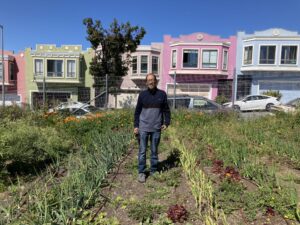 her history of civic contribution.
her history of civic contribution.  app] to stay in touch after leaving the farm.
app] to stay in touch after leaving the farm.
Share